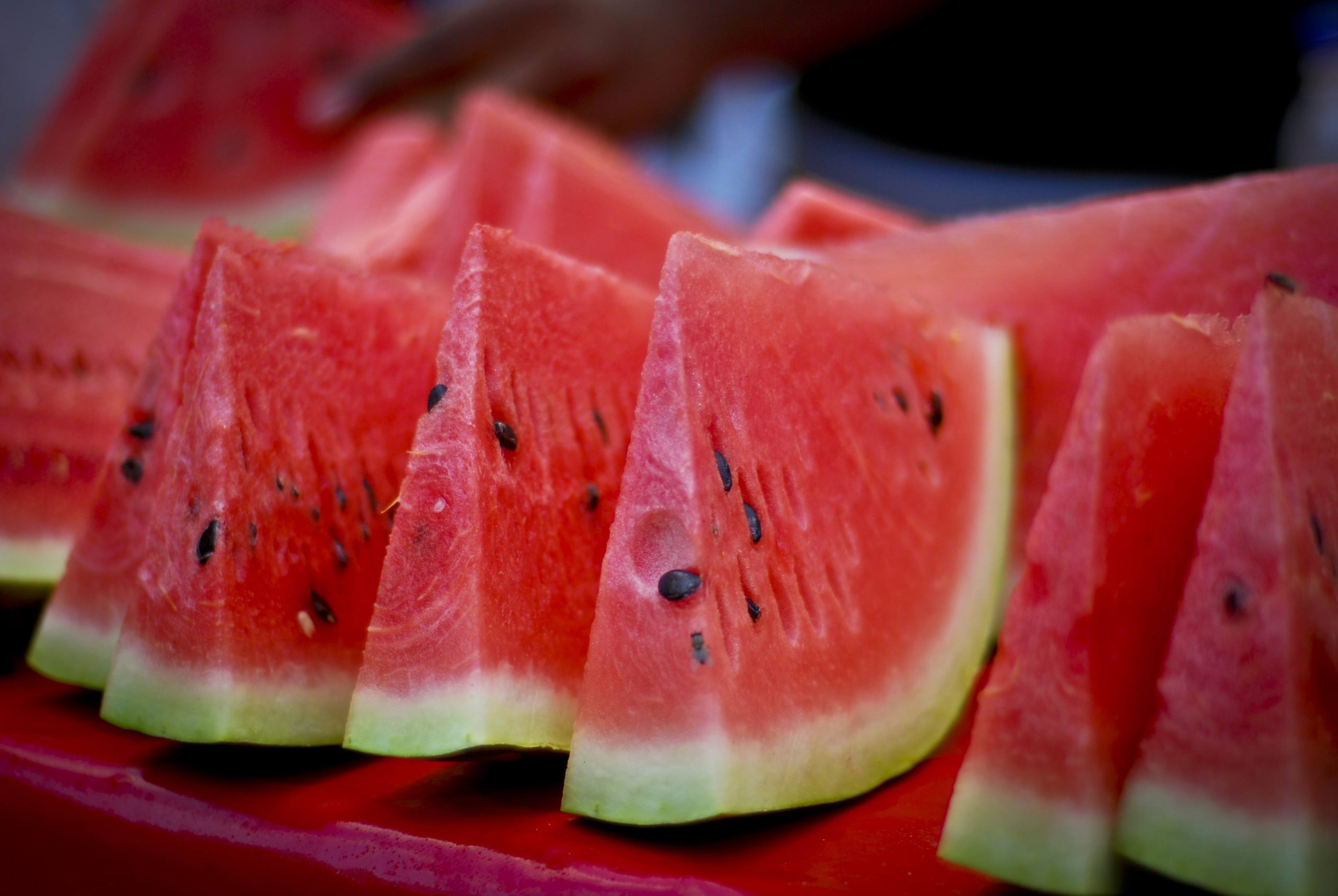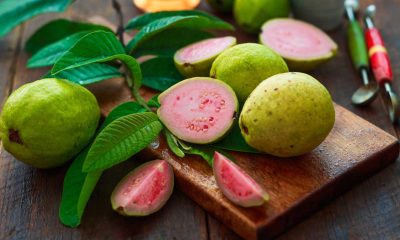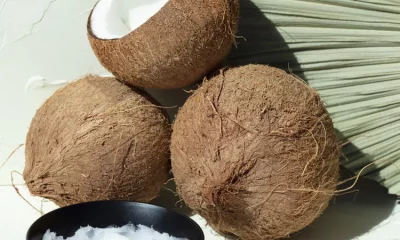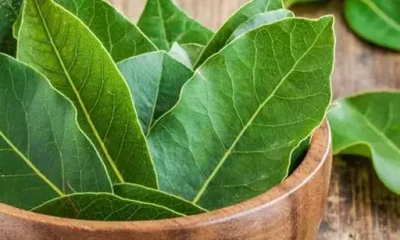Food
6 Benefits of ugli fruit and side effects

Table of Contents
Discover the 6 shocking health benefits of Ugli fruit and side effects.
It doesn’t seem very nice to name a fruit based on its appearance, but this time I’m going to let you slide the benefits of ugli fruit because this unappealing fruit is ugly on the surface.
The Ugli fruit is a cross-bred fruit found in a tropical climate and is an incredible source of vitamin C, fiber, and other nutrients, such as pectin and coumarin.
It has only been around for the last 100 years, but in that time it has developed a very specific reputation for a unique, sweet yet tangy taste.
Technically, the ugli fruit is the Jamaican form of tangelo, which is generally a breed of mandarin and grapefruit.
So, don’t let the outward appearance fool you, the ugli fruit is worth it. Why? Because the ugli fruit has beautiful health benefits, such as helping you lose weight, boost immunity, and support the heart, among others.
Health benefits of Ugli fruit
Ugli fruit has a low-calorie count per serving and contains no carbohydrates or fat, making it a no-brainer for those trying to lose weight, along with a balanced diet and exercise routine.
It’s not just the low-calorie count of this fruit that helps. The presence of fiber in ugli fruit is also a key in weight loss; high fiber diets are essential for maintaining a healthy weight or losing weight, if necessary.
One reason for this is that fiber helps you feel full for a longer period after eating, so you can wait longer to eat again without immediately feeling hungry.
High fiber intake can also decrease the absorption of toxins in the intestine and improve the secretion of hormones in the digestive tract.
There is a type of fiber found specifically in citrus fruits, known as pectin, that has several proven benefits, including aiding weight loss.
In one study, pectin was found to reduce appetite, improve satiety, and give participants energy when they ingested even a small amount.
2.- Improves the function of the immune system
Like most citrus fruits, ugli fruit is a great source of antioxidants, including (but not limited to) vitamin C.
Antioxidants are important nutrients because they fight the damage that excess free radicals can cause the body. Unfortunately, the Western lifestyle and diet provide unnaturally high exposure to free radicals that cause oxidative stress in the body.
Mutations and diseases caused by free radicals include the big killers like cancer, heart disease, stroke, and many others.
Rather, consuming antioxidant-rich foods, such as green leafy vegetables, fruits, and teas, regularly provides your body with the defenses it needs to function the way it was designed to function. Remember, your body is meant to fight disease.
Vitamin C is a very popular antioxidant, and with 70 percent of the recommended daily value in just half an ugli fruit, you are sure to reap the benefits of eating ugli fruit regularly by seeing an increase in your immune function.
Vitamin C stimulates the production of white blood cells in the bloodstream while protecting them from oxidation.
The ugli fruit also contains 8 percent of the recommended daily intake of dietary fiber per serving.
Fiber is important to many of your body’s systems, including the immune system; When you eat enough fiber, your gut is properly “clumped” and can flush carcinogens and other toxins from your system, as well as prolong stomach emptying and increase the percentage of nutrients absorbed by your system.
Because most of your immune system is located within your gut, intestinal health is closely related to a strong level of immunity to illness and disease.
A study focused on ovarian cancer found that high fiber intake can contribute to a decreased risk of cancer.
Fiber is also responsible for strengthening the walls of the colon, which also contributes to immune health.
The pectin in citrus fruits can also help relieve diarrhea, which negatively affects the digestive system and immune reactions.
3.- Helps fight diabetes
Because ugli fruit is a low-calorie food that contains zero grams of fat or cholesterol, it ranks low on the glycemic index scale.
While a diet rich in low-glycemic foods doesn’t help with weight loss, according to long-term research, low-GI foods are important in treating diabetes.
The presence of fiber in ugli fruit also helps maintain healthy blood sugar levels.
Another way that ugli fruit can help fight diabetes is the presence of citrus pectin that I mentioned earlier.
One study suggested that the pectin found specifically in citrus fruits may help relieve the symptoms of type II diabetes.
This is likely because pectin decreases the activity of enzymes that break down starches and sugar in the digestive system, helps protect against blood sugar spikes, and decreases the absorption of sugar and carbohydrates.
4.- Good for the heart
The benefits of the fruit Ugli also has several benefits to protect the heart from disease or abnormal functions, due in part to its high antioxidant load.
In addition, the presence of pectin and fiber also supports the health of the cardiovascular system.
Pectin has been shown to lower cholesterol levels specifically in those at risk for coronary artery disease when introduced into the diet without any other changes in diet or routine.
Cholesterol levels are closely related to the occurrence of heart disease, so it is important to maintain healthy cholesterol levels to protect the heart from future disease.
A high fiber diet is also associated with a reduced risk of heart disease. Fiber is associated with a regulated cholesterol and triglyceride level in the blood.
The steeper the fiber intake, the less likely a person is at risk for developing hypertension and other heart disease factors, including metabolic syndrome.
This is the reason why the Mediterranean population has such a low rate of heart disease compared to Westerners.
5.- It can reduce the risk of cancer
There are rarely healthy foods that do not affect cancer risk in some way. This is because foods with positive nutrient content increase your body’s ability to fight disease, while the typical American diet contains most of the foods that do the opposite.
Cancer is simply a collection of damaged cells coming together, and that is why I am a firm believer in using natural cancer treatments instead of dangerous chemotherapy drugs.
In addition to its cancer-fighting antioxidants, ugli fruit also contains other nutrients that are known to protect against cancer.
For one thing, pectin causes apoptosis (programmed cell death) in colon cancer cells under certain conditions and can be a useful addition to a diet designed to help the body fight colon cancer.
The Ugli fruit also contains coumarin, a chemical compound found naturally in many different types of plants.
Coumarin has been studied more recently as an alternative to traditional chemotherapy drugs, which have a long list of abominable side effects and problems with multi-drug resistance (when the body can no longer process certain pharmaceutical substances correctly).
On the other hand, coumarin is a substance of plant origin with practically no side effects and no drug resistance problems.
Coumarin is a hot topic in the cancer research world right now because it has an obvious impact on a wide variety of cancer types through several mechanisms of action, not just one.
Another common class of nutrients in fruits, including ugli fruits, is a terpene. This grand classification of organic compounds serves various purposes in different body systems, including as “biosynthetic building blocks in almost all living creatures.” Terpenes found in citrus fruits in particular have shown promise in reducing breast and pancreatic malignancies.
6.- Useful to dissolve kidney stones and gallstones
The terpenes in ugli fruit that can fight cancer are the same ones that show the possibility of dissolving gallstones and kidney stones.
One of them in particular, known as limonene, has been used for this purpose in Japan for some time.
Nutrition facts of ugli fruit
The Ugli fruit contains some of the amazing nutritional benefits of its three “parent” fruits, and even improves on one of them, but I’ll get into that later.
A serving of ugli fruit (½ fruit, about 122 grams) contains approximately:
• 45 calories
• 11 grams of carbohydrates
• 1 gram of protein
• 2 grams of fiber
• 42 milligrams of vitamin C (70 percent DV)
• 20 milligrams calcium (2 percent DV)
Like all fruits, ugli fruits also contain amazing antioxidants (in addition to vitamin C) and other important nutrients.
The ugli fruit is nutritionally closer to the orange, although the two are not identical. Oranges yield more calories per serving, but they also contain more fiber and sugar.
They also double the ugli fruit in the presence of vitamin C. In general, while ugli fruits are nutritionally valuable, regular oranges offer similar (sometimes) better nutritional content.
However, nobody wants to eat the same thing every day, right? Ugli fruits offer a different flavor than traditional citrus fruits because they combine more than one flavor and are a fun fruit to introduce into your diet.
Side effects of ugli fruit
As with any food, you may be allergic to ugli fruit, although no medical cases of a fruit allergy have been reported.
If you experience any kind of inflammatory side effects like mouth swelling or hives, stop eating ugli fruit immediately and see your doctor.
One important thing to note is that while ugli is a variety that comes in part from grapefruit, it does not have the same medicinal interactions that are found with grapefruit.
Grapefruit limits the activity of an enzyme responsible for breaking down drugs within the body, increasing the levels that remain in the body and increasing side effects and negative interactions.
However, if you are prohibited from eating grapefruit due to these interactions, it should be safe for you to eat ugli fruit.
What is ugli fruit?
The Ugli fruit is the Jamaican variation of the tangelo, which was originally experienced in the late 1800s.
However, the exact variation of the ugli fruit was not found until 1917 when a farm owner named GGR Sharp discovered it on his land.
He subsequently pollinated the plant, using the cultivars containing the least amount of seeds, and began exporting the plants in the 1930s to England and Canada, then expanded to New York in 1942.
How to select and eat Ugli fruit
Before they ripen, ugli fruits have yellowish-green skin. However, most varieties turn orange as they mature, although some end up bright yellow or green when ripe.
When choosing ugli fruit at your local market, be sure to look for any drying around the belly button and only choose the ones that do not have dry skin.
There should be some elasticity in the skin under slight pressure, and small dents are common.
Due to the color differences involved in growing ugli fruit, color should not be a consideration when choosing an individual fruit.
The most common way to eat ugli fruit is similar to how you can eat a grapefruit, cutting it in half and using a spoon to remove it from the skin.
It competes with grapefruit in size, sometimes topping it by a small margin. Ugli fruit is generally sweet enough to eat without added sweetener, as it tends more to the sweet side of the orange versus the tangerine.
Ugli fruit is considered to be in season between November and April of each year and is generally available in most fresh fruit markets around the world during that season.
How to eat ugli fruit
You can eat ugli fruit in more ways than one. If you are interested in adding sweet fruit to your morning smoothie, you can try an Ugli fruit smoothie that will give you a boost of antioxidants and potassium along with delicious flavor.
For a fresh salad with an ugli addition, you can add any kind of variation you like, and it’s sure to delight.
Final thoughts on the benefits of Ugli fruit
• The Ugli fruit is a creole combination of orange, grapefruit, and mandarin.
• It is produced only in Jamaica and is exported to the rest of the world during the “in season” months of November to April.
• The Ugli fruit contains large amounts of vitamin C and fiber in each serving.
• The various benefits of this fruit include a weight loss aid, cancer-fighting nutrients, protection against diabetes and heart disease, and the dissolution of gallstones and kidney stones.
• The Ugli fruit has only been around for around 100 years.
• There are no known side effects of the ugli fruit, and it does not have the same drug interactions that grapefruit is known to have.
Food
6 Benefits of sweet orange essential oil

Table of Contents
Food
Top 10 Benefits of watermelon and side effects

Table of Contents
- Overview
- Top 10 Health benefits of watermelon
- 1. Hydrates
- 2. Improves the immune system and prevents cell damage
- 3. Heals wounds wound healing
- 4. Benefits of watermelon for bones
- 5. Benefits of watermelon for cardiovascular health
- 6. Benefits of watermelon for weight loss
- 7. Benefits of watermelon for eyes
- 8. Diuretic effect
- 9. Anti-inflammatory and antioxidant
- 10. Benefits of watermelon for cancer
- Side effects of watermelon
- Discover the top 10 Health benefits of watermelon and side effects.
- Overview
- Top 10 Health benefits of watermelon
- 1. Hydrates
- 2. Improves the immune system and prevents cell damage
- 3. Heals wounds wound healing
- 4. Benefits of watermelon for bones
- 5. Benefits of watermelon for cardiovascular health
- 6. Benefits of watermelon for weight loss
- 7. Benefits of watermelon for eyes
- 8. Diuretic effect
- 9. Anti-inflammatory and antioxidant
- 10. Benefits of watermelon for cancer
- Side effects of watermelon
Overview
One of the best fruits to eat in summer is watermelon , which in addition to being very refreshing, contains many health properties. Along with the melon, it belongs to the botanical family Cucurbitaceae and both are very beneficial for the body.
- Although some individuals think that this delicious fruit contains only water and sugar, watermelon is rich in nutrients and provides many vitamins, minerals and antioxidants . This fruit is a very healthy food and has a low amount of calories.
Watermelons and the summer period go hand in hand. Its refreshing quality and sweet taste help beat the heat, and for those who want to lose weight, this fruit is a very tasty dessert that does not make you feel guilty when you eat it.
Top 10 Health benefits of watermelon
There are different types of watermelon, some larger, others less rounded and others without the stripes that characterize them. Regardless of the type of watermelon consumed, they are all highly healthy.
But … what are the properties of watermelon? In the following lines we present the health benefits of watermelon.
1. Hydrates
Watermelon is associated with summer and it is not surprising, since it is a food with a high water content, 92% of its composition , and contains important electrolytes.
It can be eaten at any time and is an ideal “snack” to take at any time. If we also leave it in the fridge, it will not only be delicious, but it will also be very refreshing. When the summer season approaches, watermelon becomes a very appetizing food.
2. Improves the immune system and prevents cell damage
This fruit is rich in vitamin C, which is essential for our immune system and, therefore, protects our body and helps us fight, for example, colds. It also maintains the redox balance of cells and protects them from reactive oxygen species, which damage our cells and DNA.
3. Heals wounds wound healing
The role of vitamin C in wound healing has also been observed in numerous studies, as it is essential for the formation of new connective tissue .
The enzymes involved in the formation of collagen, that is, the main component of wound healing, is inefficient without vitamin C. Ultimately, watermelon is involved in wound healing.
4. Benefits of watermelon for bones
Watermelon contains lycopene, which is especially important for our bone health .
Dietary lycopene, which is present in some foods such as watermelon or tomatoes, reduces oxidative stress that normally reduces the activity of osteoblasts and osteoclasts, two bone cells involved in the pathogenesis of osteoporosis .
The consumption of lycopene is associated with healthier bones. Watermelon is also rich in potassium, which helps retain calcium in the body, resulting in healthier bones and joints.
5. Benefits of watermelon for cardiovascular health
Consuming watermelon in large quantities, according to a research, positively correlates with the improvement of cardiovascular function , as it increases blood flow through vasodilation.
A study conducted by the American Journal of Hypertension found that watermelon extract supplementation reduces ankle blood pressure, brachial blood pressure, and carotid pressure in obese middle-aged adults with mild hypertension.
6. Benefits of watermelon for weight loss
Watermelon contains citrulline, which helps reduce the accumulation of fat in our fat cells . Citrulline is an amino acid that is converted to arginine with the help of the kidneys.
When our bodies absorb citrulline, it has the ability to block the activity of TNAP (non-tissue specific alkaline phosphatase), which causes our fat cells to produce less fat tissue, and therefore helps prevent excessive accumulation of body fat .
7. Benefits of watermelon for eyes
This fruit is a great source of beta-carotene (that’s why the reddish color inside it) that is converted into vitamin A.
It helps to produce pigments in the retina of the eye and protects against age-related macular degeneration.
It also prevents night blindness, maintains healthy skin, teeth, skeletal and soft tissues and mucous membranes.
8. Diuretic effect
Watermelon is a natural diuretic that helps increase urine flow and protects the kidneys .
It also intervenes in the ammonia removal process from the liver.
Watermelon is a diuretic and natural slimming agent that will help you stay fit and healthy.
9. Anti-inflammatory and antioxidant
Watermelon is rich in phenolic compounds like flavonoids, carotenoids, and triterpenoids . The carotenoid lycopene in this fruit is beneficial in reducing inflammation and neutralizing free radicals.
The triterpenoid cucurbitacin E is also present in watermelon, and provides anti-inflammatory support by blocking the activity of cyclooxygenase enzymes that normally produce an inflammatory surge.
Ripe watermelons contain higher amounts of these beneficial phenolic compounds.
10. Benefits of watermelon for cancer
This fruit, as I have discussed previously, is an excellent source of vitamin C, as well as other antioxidants.
That is why it can help fight the formation of free radicals associated with the development of cancer.
Lycopene intake has been positively associated with a decreased risk of prostate cancer, according to various investigations.
Side effects of watermelon
Watermelon is a wonderful source of dietary fiber and water. But, if you eat too much watermelon, it can induce bloating, gas, flatulence, diarrhea, and other such stomach problems.
We hope the article on the top 10 Health benefits of watermelon and side effects has been of help.
Food
7 Benefits of quinine and side effects

Table of Contents
- Uses of quinine
- Health benefits of quinine
- Does tonic water contain quinine?
- How to make quinine tea
- Side effects of quinine
- Benefits of quinine water
- Quinine dosage
- Discover the 7 Shocking health benefits of quinine and side effects.
Quinine, also called chinchona, is a substance extracted from the peel of a common plant in South America, which is called Quina, whose scientific name is Chinchona calisaya.
In the past, quinine was one of the most used substances in the treatment of malaria or malaria, however, since the creation of other synthetic drugs such as chloroquine or primaquine, quinine began to be used only in certain specific cases of malaria and under medical guidance.
- Although quinine is not widely used today, its tree continues to be a source for the preparation of traditional remedies, such as quinine tea, due to its febrifugal, antimalarial, digestive, and healing properties.
Uses of quinine
Quinine is used alone or with other medications to treat malaria (a serious or life-threatening illness that is spread by mosquitos in certain parts of the world).
Health benefits of quinine
Apart from offering high concentrations of quinine, the quinine tree also contains other compounds such as quinidine, cinchonine, and dihydroquinamine, which can be used for various purposes. Below are the 7 health benefits of quinine;
1. Help in the treatment of malaria
Quinine’s major benefit is for the treatment of malaria. It’s not used to prevent malaria, but moderately to kill the organism accountable for the disease. When depleted to treat malaria, quinine is given in a pill form.
2. Benefits of quinine for fever
Quinine has been believed to have antipyretic action. Even though quinine administered before acetaminophen produces a rapid drop in temperature than administration after acetaminophen, quinine alone has no effect on fever.
3. Benefits of quinine for lungs
When quinine and chloroquine are being inhaled, these two compounds activated the taste 2 receptor protein (TAS2R).
In doing so, they block the allergic reaction in the lungs, and stop the asthma from arising.
Previous research has already shown that TAS2R agonists, compounds that activate the receptors, leads to relaxation in the airway of the lungs.
But researchers had not been skilled to test whether it was able to prevent the inflammation of asthma.
4. Benefits of quinine for leg cramps
Another familiar use of quinine has been for the treatment of leg cramps caused by vascular spasm. For more than 50 years, quinine, quinidine, and hydroquinine have been used to prevent muscle cramps.
Nonetheless, because 157 adverse drug reactions associated to quinine were reported from 1969 to 1992, the Food and Drug Administration (FDA) assumed that quinine was not safe for use in this condition.
In 1994, the FDA restricted the marketing of quinine for nocturnal leg cramps and terminated its availability and the labeling of products for this use in prescription and nonprescription form.
5. Benefits of quinine for weight loss
In a controlled study, it was seen that tonic water rich in quinine helps control weight if you are on a diet. It allows you to maintain your diet and keep you full for long periods. It also helps in weight loss, and since it is mostly water, it also keeps you hydrated
6.Improve digestion
- Antiseptic and anti-inflammatory action
Likewise, the compounds obtained from the cinchona plant, mainly quinine, can be used as a bitter additive in certain medicines and beverages and can be found, for example, in some tonic waters.
However, in soda form, quinine is not found in sufficient concentrations to have a therapeutic effect.
Does tonic water contain quinine?
Tonic water is a type of soft drink that contains quinine hydrochloride in its composition, which gives the typical bitter taste of this drink.
However, the concentrations of this substance in tonic water are very low, being below 5 mg / L, so it does not have any therapeutic effect against malaria or any other type of disease.
How to make quinine tea
The cinchona is popularly used in the form of tea, which can be prepared with the leaves and peel of the plant.
To prepare the Quina tea, mix 1 liter of water and 2 tablespoons of the peel of the plant, and boil for 10 minutes; then let it rest for a further 10 minutes and drink a maximum of 2 to 3 cups per day.
In addition, the quinine present in the cinchona plant can be purchased in capsule form, however, it is important to note that this drug should only be used under medical indications since there are contraindications and there could be side effects.
It is also important to bear in mind that quinine tea can be indicated by the doctor only as a complement to treatment with medications because the concentration of quinine obtained in the leaf is lower than that obtained from the trunk of the tree; for this reason, tea alone does not have sufficient activity against the infectious agent responsible for malaria.
Quinine for covid-19
According to a study carried out in Germany, quinine could have the potential of a treatment option for SARS-CoV-2, as the toxicological and pharmacological profile seems more favorable in relation to its progeny drugs H-CQN or CQN.
Quinine is an alkaloid compound included in Cinchona bark. The ability of quinine for COVID-19 treatment, among others, has the same basic structure with CQ and HCQ, namely, Quinoline, which can hinder viral fusion; is feeble alkaline so that it can increase the pH of cell organelles; has higher binding affinity to SARS-CoV-2 compared with CQ and HCQ; has antiviral activity against SARS-CoV-2 in-vitro; has other antiviral activity and acts as an immunomodulator.
It is undeniable that quinine also has some side effects, but the side effects caused are reversible and in long-term use and large doses.
The in-vitro study also stated that the toxicity profile of quinine is better than both CQ and HCQ. We conclude that quinine has the potential to be developed as a COVID-19 treatment with a better safety profile than that of CQ and HCQ.
Side effects of quinine
The use of the quinine plant and, therefore, quinine, is contraindicated in pregnant women and children, as well as in patients with depression, blood clotting problems, or liver diseases.
In addition, the use of quinine should be evaluated when the patient uses other medications, such as Cisapride, Heparin, Rifamycin, or Carbamazepine.
The use of the cinchona plant must be indicated by the doctor, since excess amounts of this plant could have adverse effects, such as altered heartbeat, nausea, mental confusion, blurred vision, dizziness, bleeding, and liver problems.
Benefits of quinine water
Tonic Water is a carbonated soft drink that may comprise sugar and has little nutritional value. The quinine in tonic water delivers a unique bitter flavour.
The presence of quinine in tonic is often correlated as a major health benefit of tonic. Quinine’s major benefit is for the treatment of malaria. It’s not used to prevent malaria, but rather to kill the organism accountable for the disease. When found in small doses in tonic water, quinine is entirely safe to consume.
Otherwise, the health and nutritional benefits of tonic water are pretty slim.
If you do want to make a healthier swap, we propose switching out your tonic for our soda water, which has the carbonated fizz—without the added sugar content or quinine.
Quinine dosage
Quinine has been widely researched as an antimalarial, and has been used at doses of 325 mg to 1 g as the sulfate salt. Elegant doses of the crude bark was virtually 1 g.
Trending searches….
•Benefits of quinine from grapefruit
•Quinine tonic water benefits
•Quinine sulphate uses
•Which tonic water has the most quinine•Quinine for COVID 2021
•Quinine and COVID vaccine
•Does quinine kill viruses
•What is quinine good for
•Tonic water with quinine
•Why is quinine banned
•Quinine pills
•Quinine Supplement
•Quinine vs chloroquine
•Quinine for cramps
•Quinine side effects NHS
•What is quinine made from
•Quinine mechanism of action
•Quinine structure
-

 Food1 year ago
Food1 year ago10 + Benefits of carrot juice and side effects
-

 Benefits4 months ago
Benefits4 months agoThe Benefits of Joining Gym Lumolog – Improve Your Fitness & Health
-

 Health1 year ago
Health1 year ago50 Super Healthy (And Very Often Cheap) Foods
-

 Health1 year ago
Health1 year ago5 Shocking health benefits of kinkeliba and side effects
-

 Food1 year ago
Food1 year ago8 shocking benefits of leek juice and side effects
-

 Health1 year ago
Health1 year agoBenefits of guava leaves Sensually
-

 Weight Loss1 year ago
Weight Loss1 year agoChaz Bono weight loss secret
-

 Health1 year ago
Health1 year ago13 shocking health benefits of Thai eggplant












